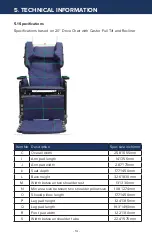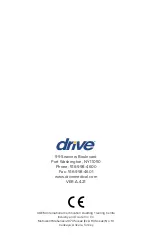
- 8 -
2.7 Cleaning
Pr
ior to disinfecting, do a cleaning step to remove visible surface soil,
bodily fluids, etc. A mild soap or detergent solution made with warm water
is recommended for most materials. Rinse soap/ detergent residue by
wiping with plain potable water. Dry surfaces by wiping with a clean dry
wiper or cloth.
Disinfection:
U
se the disinfectant recommended in the User manual for the type of
surface and material (hard nonporous, powder-coated, metal, fibrous,
foam, wood, cloth, epoxy, etc.)
T
he use of 1:10 bleach solution (sodium hypochlorite) is a highly effective
and efficient surface disinfectant. Use of bleach may result in discoloration
or degradation of some materials.
E
PA-registered commercial disinfectants in the format of solutions,
wipes, and spray are effective surface disinfectants when used per label
directions. Examples include bleach and quaternary ammonium compound
disinfectants. Global commercial brands include Lysol® and Clorox® (home
and Institutional use); PDI® (healthcare setting); Sani-Professional® (food
service and janitorial setting).
Sanitization:
H
and hygiene is of critical importance throughout these processes. Wash
hands with soap and water using the CDC-recommended procedure.
When soap and water are not available, or to sanitize hands (gloved or
ungloved) between washings, the use of a 70% -90% (Isopropyl) Alcohol
rub is recommended. Hand sanitizing wipes may also be used.
Personal Protective Equipment (PPE)
F
or
hospital
and
Institutional
settings, follow all facility-specified procedures
for PPE. The video at the link below provides the current standard.
https://www.vumedi.com/video/ppe-donning-and-doffing-cdc-sequence-
for-covid-19/
F
or the homecare setting, wear gloves, mask, gown or apron, and safety
glasses or face shield if available. Tie hair back and cover. Wear non-
porous, cleanable shoes or boots.
D
on PPE and prepare the area, including hand hygiene and waste disposal,
before prepping solutions, cleaning, and disinfecting surfaces. Upon
donning PPE, do not touch your face or eyes further.
2. SAFETY REQUIREMENTS






































